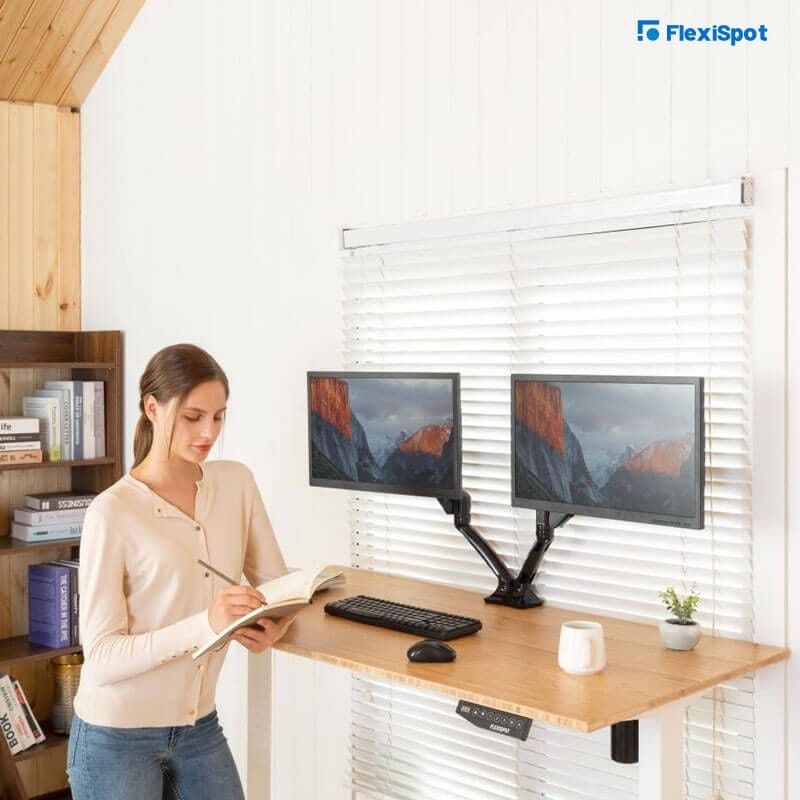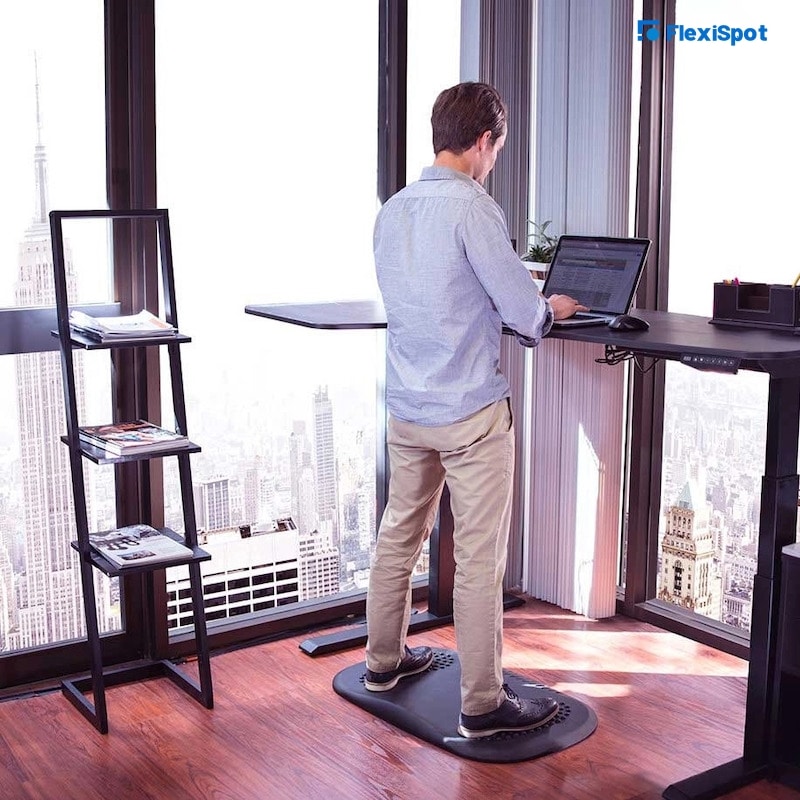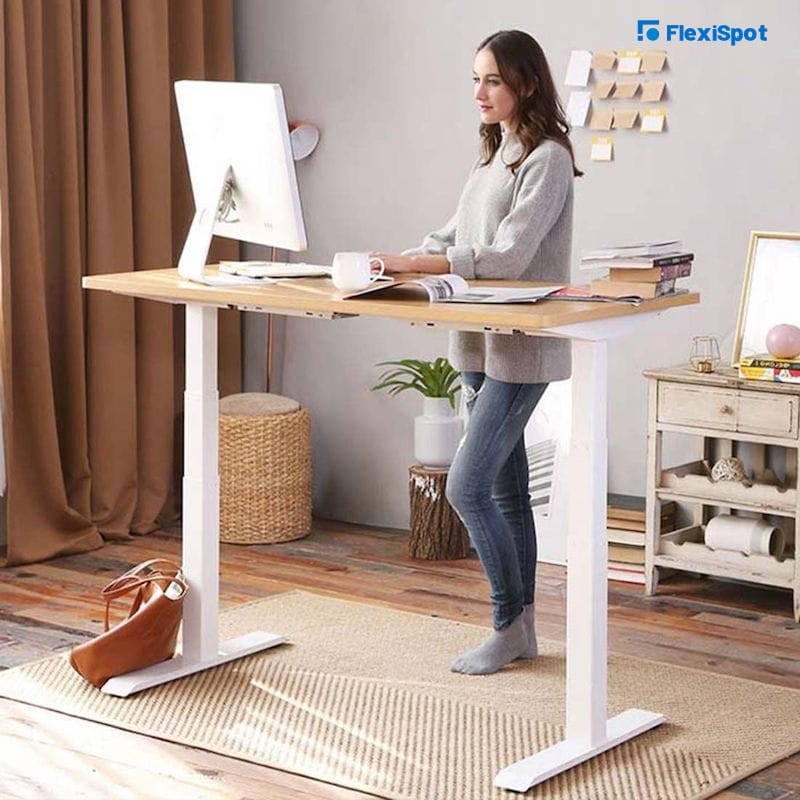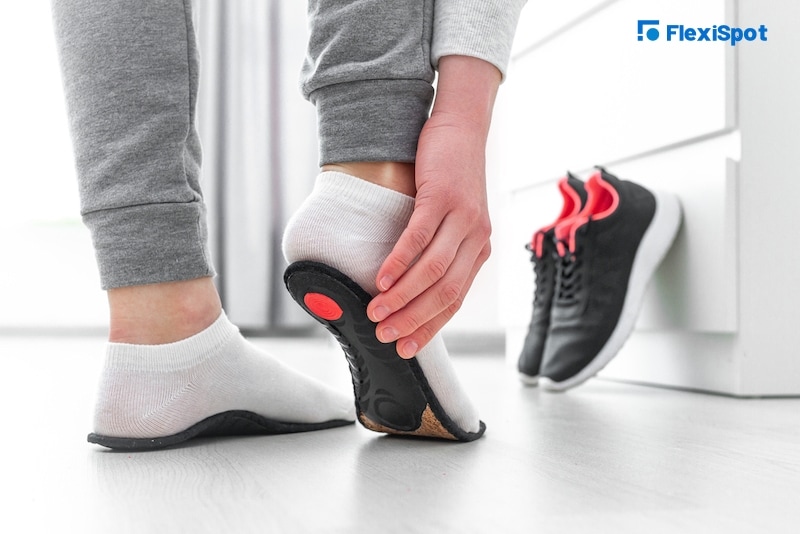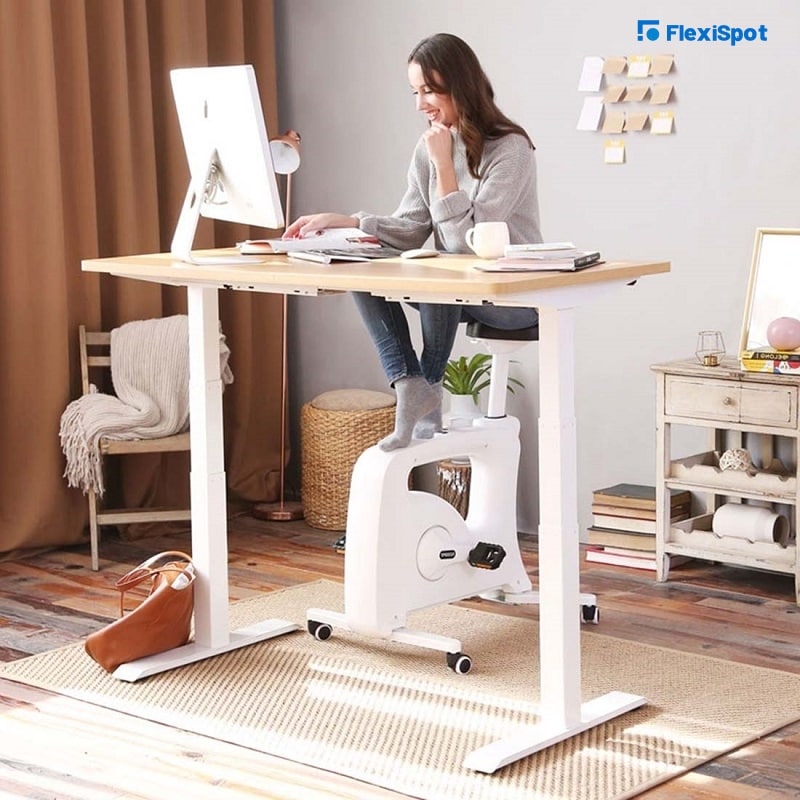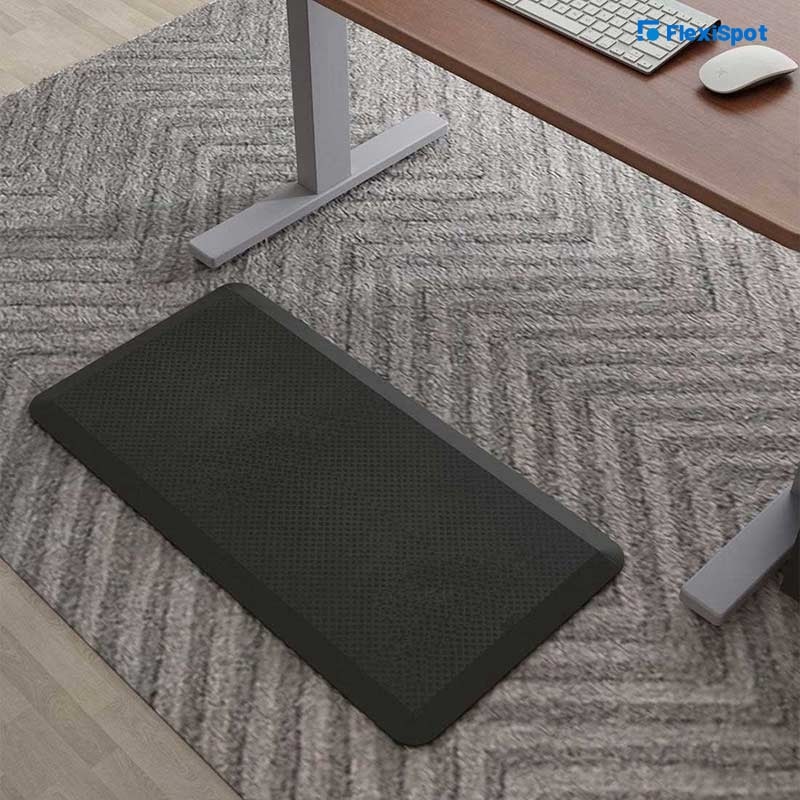Standing desks have become a useful office bonus as medical information regarding the health risks of extended sitting has flooded in over the last several years. According to the Society for Human Resource Management's (SHRM) 2018 Employee Benefits Survey, companies' providing of standing desks to employees increased by 9% in the previous year.
Apple CEO, Tim Cook, said in June that all of his staff have standing workstations, claiming that the mix of standing and sitting was "much better for [the employee's] lifestyle."
The increase in interest is partly based on the premise that private workstations have decreased significantly over time. Allowing employees to move vertically during the day typically compensates for a bigger workstation's lack of horizontal mobility.
So, if your workplace has the privilege of a standing desk, how can you make the most of it? What stretches can help you get your blood flowing, and what furniture items may aid you in getting the most bang for your buck?
Standing for an Extended Time Period Might Be Just as Harmful as Sitting for an Extended Period of Time
First and foremost, a standing desk should not be used to replace sitting, and standing for lengthy amounts of time is not recommended by physicians or physical therapists. Standing still may lead to a variety of issues, the most common of which are vascular. Standing for long periods of time puts a lot of strain on your legs, causing edema, varicose veins, and hemorrhoids.
Standing for lengthy periods of time may cause collapsed veins in the limbs, as well as knee, back, and hip discomfort. If you use a standing desk, please be careful not to overdo it and take breaks to sit down. Moderation is key when it comes to sitting and standing. Every hour or so, switch your position.
With 15 And 10 Minute Intervals, Work Your Way Up to Longer Periods of Standing
If you're new to utilizing a standing desk, you've definitely noticed that standing for an hour straight may be exhausting. It should get easier with time, but take your time to get to a comfortable tolerance level.
Standing for 15 minutes on your first day. After that, take a seat for a while and see how things go. As you're able, add another 10 minutes. Your body must adjust to the new environment. Working on back strength, core strength, and leg exercises can be beneficial in getting your body in condition for standing. Since office workers aren't often active at work, we must try and move in situations and locations where we aren't used to doing so.
Set A Timer to Prompt Yourself to Stand at The Beginning
It takes some getting acclimated to using a standing desk. We have become so accustomed to reclining in a sedentary posture that we forget we have a sit/stand desk at our disposal. Users are encouraged to set alarms on the phone or laptops to remind them to get up — and then sit down again. You have complete control over when the times are established. It will become part of the routine to stand and sit throughout the day after a time.
Idleness Is Indeed the Enemy: Include Activities and Stretches into Your Routine
A standing desk should not be used to substitute walks, stretches, or other forms of exercise. Do some stretching every hour for 60 seconds to start blood flowing, such as knee bend squats, heel raises, marching in place, or walking down the corridor. The important thing is to keep moving.
We urge individuals to move their bodies throughout the day, in addition to stretching at their workstations. Instead of sending an email, climb the stairs, park farther away, and go to your coworker's desk to ask them a question.
Use yoga poses to strengthen your neck, shoulders, back, and legs. Consider these recommendations if you can fit a few yoga positions into your workday:
For the neck and shoulders: Cow-face position, neck rolls, chin retraction, shoulder rolls, eagle arms, and cross-body arm stretches
To help your back: On a chair, a cat or a cow, a puppy dog at a desk or a wall, and a chair that spins side to side.
For leg exercises: Calf stretches, lifting knees when standing, and sitting in a one-leg chair at a desk
Standing Desk Success Requires Good Posture
Hunching, whether standing or sitting, may cause severe neck pain, so correct posture at a standing workstation is critical to reaping the advantages. Using a standing desk with poor postures, such as leaning substantially to one side, might have detrimental consequences.
While we all know what excellent posture looks like, knowing how it feels might be more difficult. How do we know if we are doing everything correctly? Well, your skeleton is built to support your weight without putting too much strain on your body. All you have to do now is align your joints.
Imagine a thread running from the top of your head to your chin, keeping the spine straight and the chin level by not dropping it downwards towards the neck. Imagine the shoulders lying in a linear fashion over your hips, knees, and ankles, and then resting the body on that sturdy foundation. Imagine the ribcage contracting and the tailbone directed towards the floor during this exercise, rather than arching towards the rear wall or curling forward.
Make an 80-Degree Tilt in Your Elbows and Place the Keyboard at The Level of Your Belly Button
Both the mouse and keyword should be at the same height as your belly button, resulting in an 80-85-degree bend in the arm, which is a neutral posture. The monitor should be 18 inches away from your face, with the top of your laptop screen at eye level, and you should be gazing down 10-15 degrees.
Take Regular Typing Breaks
It's crucial to give the wrists a break from typing, whether you're seated or standing. To enable the muscles to recuperate, we suggest not typing for more than half an hour at a time —a two to three-minute break may be quite beneficial.
If you're able, try some simple wrist and arm stretch to help prevent/relieve Carpal Tunnel Syndrome; WebMD offers a list of activities that may assist.
Shoes with Solid Insoles or Arch Support Are Recommended
Workers may not be able to work in sneakers in locations where more professional attire is required, but comfy shoes with support are essential for enjoying the advantages of a standing desk.
"One of my customers shifted to a standing desk, and it made her back discomfort worse," explains personal trainer Carol Michaels. "I then noticed that she was standing at her desk in four-inch heels." As a result, suitable footwear is required while utilizing a standing desk.
Investing in shoes with strong cushioning and considerable arch support, or inserting gel foam inserts with existing shoes, is recommended. It doesn't have to be a shoe, but it should have a solid sole.
The higher the heel, the more dangerous it is. Weight is supposed to be distributed evenly throughout your whole footprint. Anything that causes this to alter is unfavorable.
Get an Adjustable Standing Desk
To get the most out of your standing desk, make sure that it is adjustable. FlexiSpot provides a great adjustable standing desk that you can tweak to make sure that it fits your height perfectly. This can help you create an ergonomic workstation that doesn't take a toll on your legs, back, or neck. You will be able to adjust it in a way that everything is at the level it is supposed to be.
You will be able to set it to a certain height through the control panel so that whenever you use the motor to raise or lower it, it automatically shifts into your preferred height measurements. It even has a cable tray and other great amenities that can add to your overall workspace.
Get an Anti-Fatigue Mat
If you are planning on eventually standing at your desk for long periods, make sure to get an anti-fatigue mat to go with it. It can make it quite easy to stand on your feet without resulting in your ankle and knees hurting. You will be able to stay productive while on your feet, and the hours will simply fly by without you noticing.
In Conclusion
There are many ways to get more out of your standing desk with the right approach and attitude. Make sure not to overdo it in the beginning while your body gets used to it, and you are golden!

